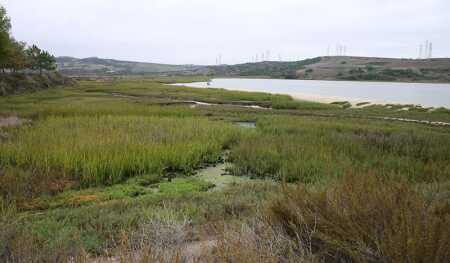Last year, the California Supreme Court ruled that a project proposed through the citizen initiative process and subsequently approved by a council—without a public vote—was exempt from a California Environmental Quality Act (CEQA) review, overturning a lower court decision. Now, a project can avoid months of costly CEQA-related delays if a developer raises enough signatures for an initiative and the council or board simply ratifies the project.
Several projects have already used the voter initiative route, including the backers of National Football League stadiums proposed earlier this year in Inglewood and Carson. In August, the municipal government of Carlsbad, a coastal community north of San Diego, approved a master plan for 203 acres (82 ha) along the Agua Hedionda Lagoon, including a shopping center proposed by Caruso Affiliated, after the developer gathered 20,000 signatures for an initiative.
More and more developers are expected to use this process, which opponents say is simply a loophole in the CEQA process. “I think we’ll see more of it and unfortunately I think it will be the larger developments, the ones that really need CEQA the most,” said Livia Borak, an attorney with the Coast Law Group, an Encinitas, California–based law firm focused on environmental issues.
CEQA was hailed as a groundbreaking attempt to ensure environmental protections when it was signed into law in 1970 by then-Governor Ronald Reagan. But CEQA’s role has changed in recent years, as project opponents used different CEQA provisions to launch lawsuits against developments, adding months and, in some cases, years to the development process. “There are few state laws developers loathe more than the California Environmental Quality Act,” the Los Angeles Times wrote in a recent editorial.
“People have been arguing for a long time that it needs reform,” said Greta Brownlow, an adjunct professor in the San Jose State University department of urban and regional planning and an associate with LSA Associates, a consultancy.

In August, the municipal government of Carlsbad, a coastal community north of San Diego, approved a master plan for 203 acres (82 ha) along the Agua Hedionda Lagoon, including a shopping center proposed by Caruso Affiliated, after the developer gathered 20,000 signatures for an initiative. (Bovlb/Wikimedia)
Executives at Caruso, developer of the Carlsbad project, were convinced that a rival shopping center company would use a barrage of CEQA lawsuits in an attempt to scuttle the project. Instead, the developer raised signatures for the initiative, which left the council with only three choices—delay for 30 days, put the project to a public vote, or simply approve it. The council approved it in a unanimous vote.
“Our goal with the initiative had nothing to do with avoiding CEQA,” says Bryce Ross, vice president of development for Caruso Affiliated. “It had to do with avoiding frivolous anticompetitive lawsuits.”
The initiative process route has always been available for developers, but there were legal gray areas. In reversing the lower court, the Supreme Court decision on Tuolomne Jobs & Small Business Alliance v. Superior Court of Tuolomne County removed any doubt the courts would back the CEQA exemption when governments approved a project through an initiative.
“Before, there was always the potential to challenge in court,” Borak said. “Now, the [California] Supreme Court has spoken.”
Typically, developers aggressively avoid initiatives and the potential of a public vote, but the ability to win a quick approval by a council and avoid CEQA complexities might be worth the roll of the dice. “It’s a matter of political calculus,” said attorney Anna Shimko, chair of the real estate and business practice group for Burke, Williams & Sorensen. “You have to consider the political reality.”
For many builders, the lengthy process of building grass-roots support for a development may outweigh the gains. “The key here is, how important is it to the developer to avoid CEQA review?” Shimko said. “If you’re going to spend six months courting the community, you might have already gotten through CEQA. CEQA is not really the end of the world.”
The initiative process raises a variety of planning issues. Councils and boards will face pressure to approve the initiatives, rather than put them to a public vote. Elections are expensive and divisive. At the same time, developers can spend millions to promote the benefits of a project directly to the public.
Some planners fear that the process will be used as an end run around proper environmental review and lead to planning by ballot box, with a well-financed initiative effort bypassing public debate.
“It allows the city council to approve a project that only a minority of voters may support,” said Terry Rivasplatas, senior environmental planner with ICF International, the consultancy. In some communities, the threshold for an initiative may be only a few thousand signatures. “It’s not a huge number.”
To stave off critics, Caruso developed its own 4,000-page environmental report for the Carlsbad project, covering CEQA standards. “What was intended by CEQA was built into [the proposal],” Ross said. The developer spent three years cultivating public support—starting long before the Supreme Court CEQA ruling—including more than $2 million in marketing and TV ads touting what they dubbed the “85/15 Plan,” stressing the ratio of preserved public land to developed land proposed in the plan.
But the unanimous council vote in August has not ended debate on the project. Opponents have launched their own signature drive, hoping to force repeal of the council’s decision. Within a few weeks opponents raised enough signatures for a referendum, which would force a public vote on the project. According to public disclosures, Caruso has now spent more than $5 million this year battling opponents.






